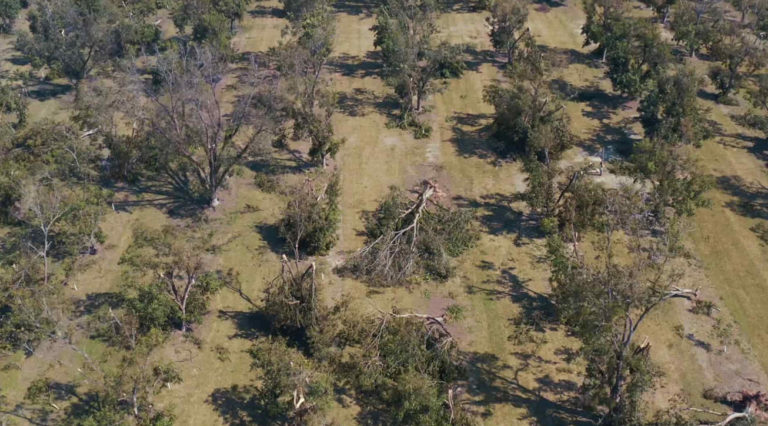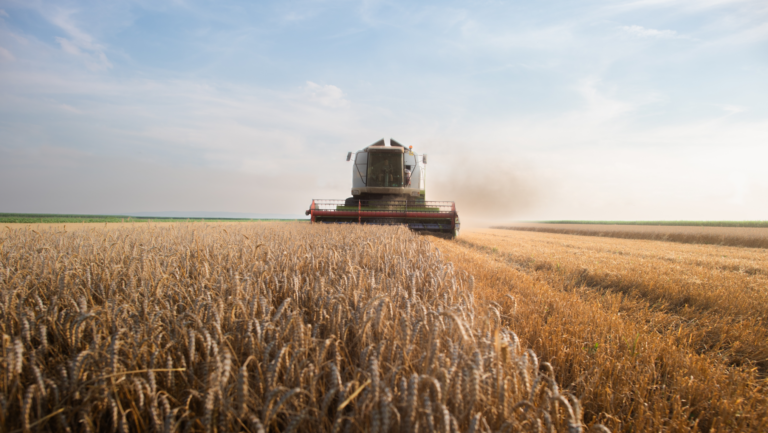Climate Change in Agriculture and Agriculture Lending
Discover how climate change can affect weather patterns—causing both positive and negative impacts on the agriculture industry.
It’s no secret that many scientists believe our planet’s climate is changing at a rapid rate, pointing to evidence such as global temperatures rising, oceans warming, ice sheets shrinking, glaciers retreating, the amount of spring snow cover in the Northern Hemisphere decreasing and melting more quickly than it used to, and the global sea level rising.
Of course, climate changes impact weather—weather being the mix of events that happen daily in our atmosphere, whereas climate describes what the weather is like over a long period of time in a specific area. All farmers know how critical weather is to their success. An area’s climate, which can include averages of precipitation, temperature, humidity, sunshine, wind, and other measures of weather that occur over several years, is typically taken into account when a farmer is determining what type of crop to seed during planting season. The challenge with climate change is that often it leads to unexpected weather patterns that can damage or destroy crops and livestock.
However, the relationship between climate change and agriculture can also be beneficial. In this article, we’ll explore both sides—the pros and the cons of climate change in the agriculture sector—and take a look at how the changing climate is impacting agricultural production across the nation.
Pros of Climate Change in Agriculture
According to the United States Environmental Protection Agency, in some areas, an increase in temperature may benefit the types of crops typically planted there and/or allow farmers to cultivate crops more commonly grown in warmer places.
For example, in the midwestern region of the U.S., farmers have adjusted their planting practices and are growing more corn than they have in previous years despite warmer-than-usual temperatures. In fact, today’s U.S. farmers harvest five to six times more corn per acre than their predecessors 100 years ago. Yields of other crops around the world have also ballooned in recent years.
Increased temperatures often result in longer growing seasons, too, which can benefit farmers and consumers—more time for growth usually means a larger harvest, after all—and some experts report that if farmers can simply adapt to benevolent climate change in their respective areas, they will continue to see fields full of thriving crops.
Furthermore, a Food and Agriculture Organization of the United Nations report titled “The State of Agricultural Commodity Markets 2018” focusing on the relationship between agricultural trade, climate change, and food security also revealed that climate change may be a positive thing, at least for some countries. The U.S., Canada, and Russia are each predicted to grow their agricultural output and exports by 2050.
Cons of Climate Change in Agriculture
Unfortunately, climate change can mean negative things for the agriculture industry as well.
Increased temperature and atmospheric carbon dioxide can stimulate plant growth, but they can also be harmful. That’s because many weeds, pests, and fungi thrive under warmer temperatures and higher carbon dioxide levels, which could cause problems for farmers’ crops previously unexposed to these species – and increased carbon dioxide reduces the nutritional value of most food crops. Additionally, extreme temperatures can prevent crops from growing successfully, particularly if the temperature exceeds a crop’s optimal level.
Climate change can impact farm animals, too. Heat waves, which are projected to increase under climate change could directly threaten livestock. In 2011, events involving exposure to high temperatures caused more than $1 billion in heat-related losses to agricultural producers. Furthermore, heat stress over time can increase an animal’s vulnerability to disease and reduce its fertility and milk production. Climate change may also increase the prevalence of parasites and diseases that affect livestock—warmer winters and an earlier onset of spring could enable some parasites and pathogens to survive more easily.
It’s also important to consider how climate change can increase the likelihood and intensity of natural disasters such as hurricanes and tornadoes—practically guaranteed to cause serious damage or even destroy an operation. Droughts and floods are another highly problematic effect of climate change—case in point—the recent floods in the Midwest.
Adverse effects between climate change and agriculture can also be observed in the changing rainfall levels. In North Florida, normal rainfall for the month of December is around a few inches, but in 2018, 25 or more inches flooded the region’s orchards, eroded crop lanes and tractor roads, washed away mounds of vital pine bark substrate, and greatly increased labor costs.
Looking towards the future, some experts predict climate change will eventually affect food security at the global, regional, and local level due to its propensity for disrupting food availability, reducing access to food, and negatively impacting food quality.
Prepare for a Stronger Financial Future with AgAmerica’s Line of Credit
No matter how the changing climate impacts the agriculture industry in the coming years, AgAmerica Agriculture Lending will be here and ready to help with our low interest rates, long amortizations, and an outstanding 10-year line of credit. If you’re ready to discuss the financial future of your operation, contact our professionals today.






